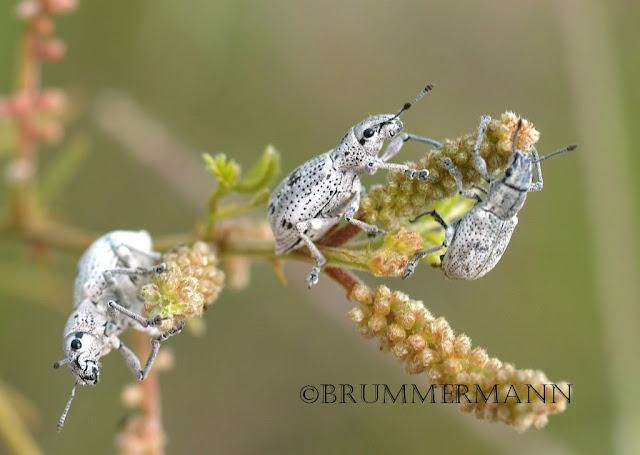Many of my bug safaris are just naturalists' explorations of anything crawling or buzzing around or hiding under cow dung. At other times, the participants concentrate on a certain family of insects, which helps my blog writing tremendously. This focus may develop inadvertently because habitat, season or a weather event favors the appearance of certain groups of insects. Or it develops because my excursion companion arrives with an interest in certain taxonomic groups, and we seek out habitat that supports those groups. Hopefully weather patterns and moon phase don't work against us. For several weeks now, I joined the Arizona tour of my friend and co-author for the book Arizona Beetles, Dr Arthur Evans. We looked for all kinds of beetle species in places that Art already fondly remembered from the past and a few that I introduced him to. At the same time we hoped for more monsoon activity. On the last July weekend, the arrival of Ted MacRae made us concentrate somewhat more on his favorite groups, Cerambycids and most of all Buprestids. We all met in the Southfork Creek area near Portal in the Chiricahuas. In Portal I always enjoy the lovely hospitality of my friend Barabara Roth, definitely a great added bonus to the breathtaking beauty and the ecological richness of the area.
Many Cerambycids are night-active forest creatures and come to black lights quite willingly. Of course they have been much more active in wetter years, and I had many more species at my lights then. This year I strung my light's out in Barbara's back yard.
There, Ted and Art also found a very small Hardwood Stump borer that may have emerged from a cavity riddled stump, left in place from a tree that died, and that is now part of Barbara's entrance steps.
 |
| Styloxus bicolor, a cerambycid with short elytra. From Barabara's place in Portal. Photo Steve Lingafelter |
 |
| Tetraopes discoideus |
 |
| Rhopalophora meeskei and Lycids |
 |
| Tetraopes femoratus |
 |
| Ericydeus lautus, my personal rain weevil |
 |
| Mwcas rotundicollis |
Far more flighty and shy than the morning-sluggish Cerambycids are the Buprestids. Tiny Pachyschelus secedens is the exception, usually clinging tightly to its legum host Desmodium.
On the soft, sunflower-like leaves of an as yet unidentified Asteraceae we found, as I had expected, a number of red-necked Agrilus. There are 2 similar spp. around in SE AZ, so I have to wait for Ted to work on the exact identification. A few Acmaeodera cazieri turned up on the very few flowering plants at Sunny Flats and along the road.
Leptinotarsa rubiginosa, arguably the prettiest of the 'Potato Beetles' diverted even Ted's intense buprestid-focus for a while. The bright red bug really screams for attention, but I have never found more than a single one and never on its supposed host plant the ground cherry.
 |
| Leptinotarsa rubiginosa |
Still, sudden buzzing noises announced some rather active beetles: big Hippomelas males and even larger females were zipping around those knee-high mesquites.
 |
| Hippomelas shenicus |
 |
| Hippomelas planicauda |
Acmaeodera gibbula were sitting on flowers and branches of the one blooming Acacia rigida.
These Acacias are also the host plant of the large large, yellow powdered Gyascutus caelatus, and Ted and Art found a few of those, too.
 |
| Gyascutus caelatus |
 |
| Sphaerobothris ulkei |
 |
| Sphaerobothris ulkei female |
 |
| Art and Ted at work |
 |
| Minor flash flood and easterner, easily impressed |

















No comments:
Post a Comment